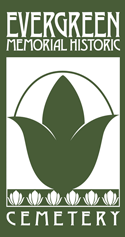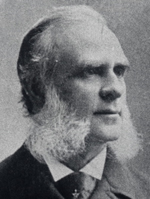
Edgemont, the 23-room estate home of Robert Henderson, was built in 1900 on Howarden Drive
The Henderson family settled in Riverside in 1897. It included Robert Henderson, his wife Jennet, three sons (Robert L., Henry B., and William T.) and a daughter Jean Anne.
The Riverside Daily Press welcomed him on May 4, 1897, saying “Robert Henderson has been one of the leading brokers in fruits in New York for over 25 years, distributing fruits to all the principal markets in U.S. and also exporting to Europe. His business has always been conducted on a strictly brokerage system and he established a reputation in all these markets such as to make his name a guarantee for straightforward, honorable dealings. He has been the New York representative of Griffin & Shelly Co. for many years.”
Upon his arrival, Henderson, his sons Robert L. and Henry, and two other men started the Riverside Fruit Company, a packing and selling agency for local growers at Twelfth Street and Pachappa Avenue. At the time, the building was the largest packinghouse to be built in the city. It included such amenities as electric lights, an electric powered grader, and a conveyor system. Henry, an electrical engineer, oversaw the production of these facilities. He also served as the secretary and treasurer while his father was the president. The Riverside Fruit Company packed under the citrus bands of Alpha, Stella, and Elk. The citrus brand, Delta, was also affiliated with the Hendersons.
Henderson also bought a ten acre orange grove east of Victoria Avenue. Between 1897 and 1900, Henderson, his wife, and daughter traveled between Riverside and New York to take care of the New York business, Robert Henderson and Company. His sons, Robert L. and Henry, stayed in Riverside to oversee his local business interests while William remained in New York, not moving to Riverside until the early 1900s.
The New York business, Robert Henderson & Company, closed in May 1900 with the death of a Charles H. Henderson (Robert’s brother) and Robert’s retirement. Sometime between 1902 and 1905, the Riverside Fruit Company also ceased operations at its Twelfth Street location. By 1905, a new company was operating on the site. The Riverside Foundry and Machine Works built fruit crate nailing machinery and deep well pump heads. Henry Henderson served as treasurer and secretary for a number of years and Robert L. Henderson was briefly the bookkeeper. In 1909, George Parker bought the company, renamed it the Parker Machine Works, and took on Fred Stebler as competition in the manufacturer of citrus packing equipment.
In 1903, Robert Henderson served as treasurer of the Victoria Avenue Improvement Association, with Robert L. also participating in the civic organization.
In addition to their association with the Riverside Fruit Company and the foundry, the family engaged in other activities. Robert Henderson was one of the directors of the Prenda Pumping Co. incorporated in October 1898. He was also associated with the Riverside Trust Company.
Though the commercial buildings associated with the Hendersons no longer exist, their first residence in Riverside remains. In 1898, Henderson bought a 40-acre property above the Gage Canal and in 1900, he built the nine-bedroom residence, Edgemont, for a cost of $13,000, the most expensive residence at the time in Riverside. The secluded location, Queen Anne-style home had a tower and sweeping verandah. According to the Riverside Press on December 2, 1898, he named the street in front of his property Hawarden Drive. But like many growers, the freeze of 1913 hit the Hendersons hard, and the family lost Edgemont when they lost their groves to foreclosure. Arthur B. West, President of the Southern Sierra Power Company, bought the house in 1917. Robert and his wife Jennet moved in 1917 to a house at 965 12th Street, then in 1918 to 991 10th Street and in 1921 to 993 Locust St.


